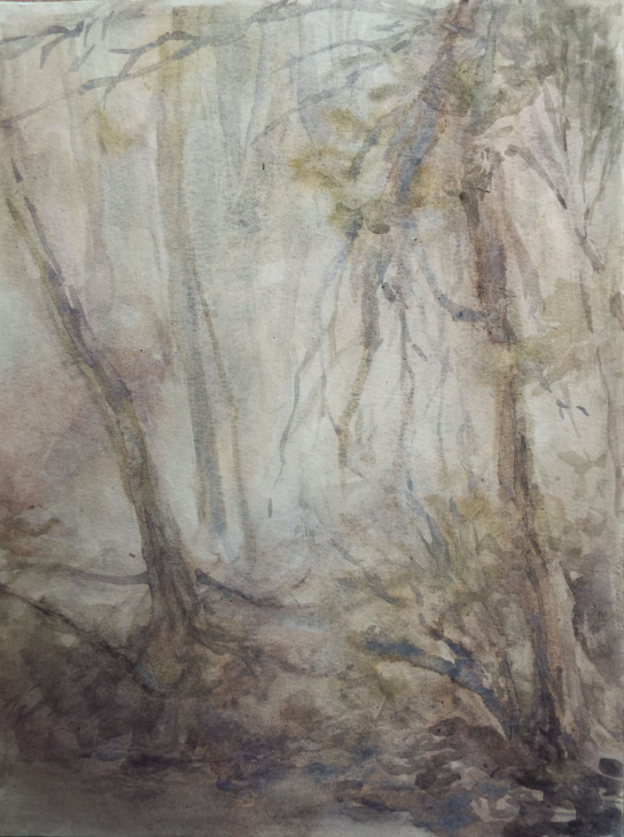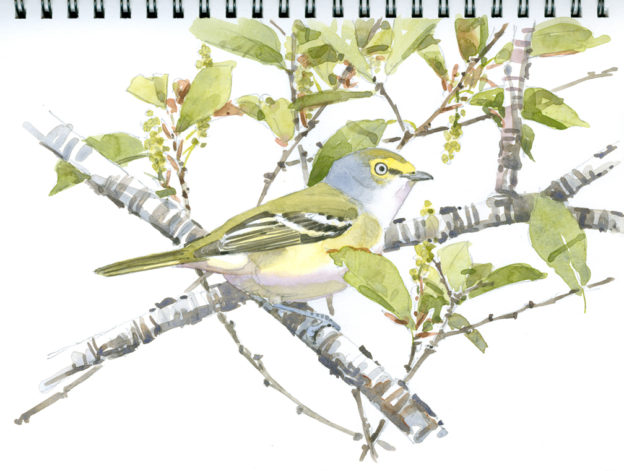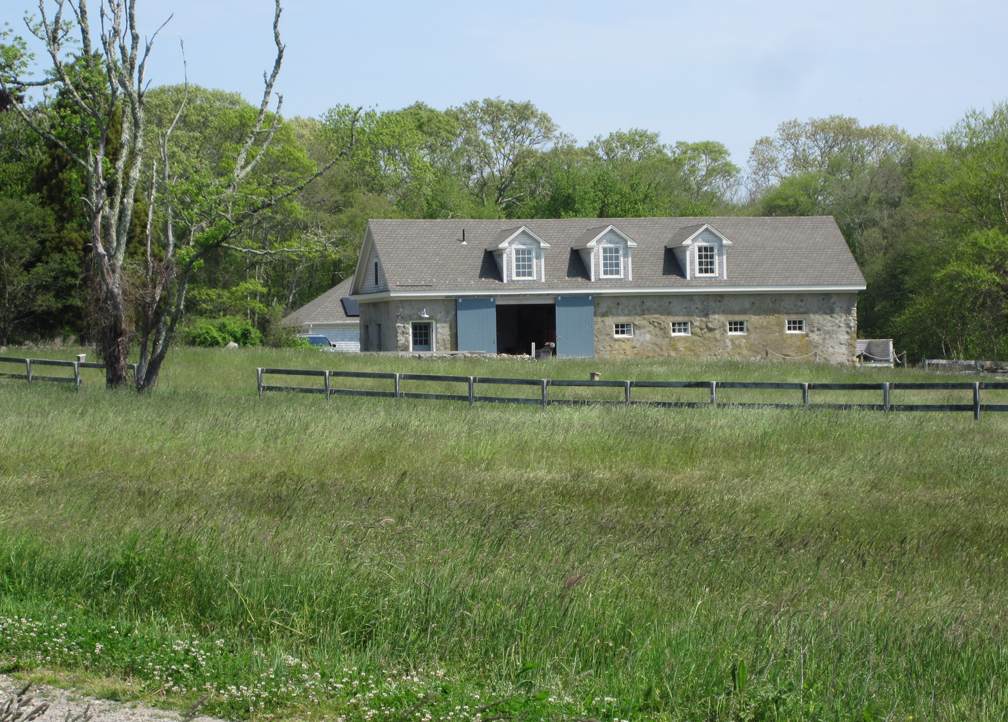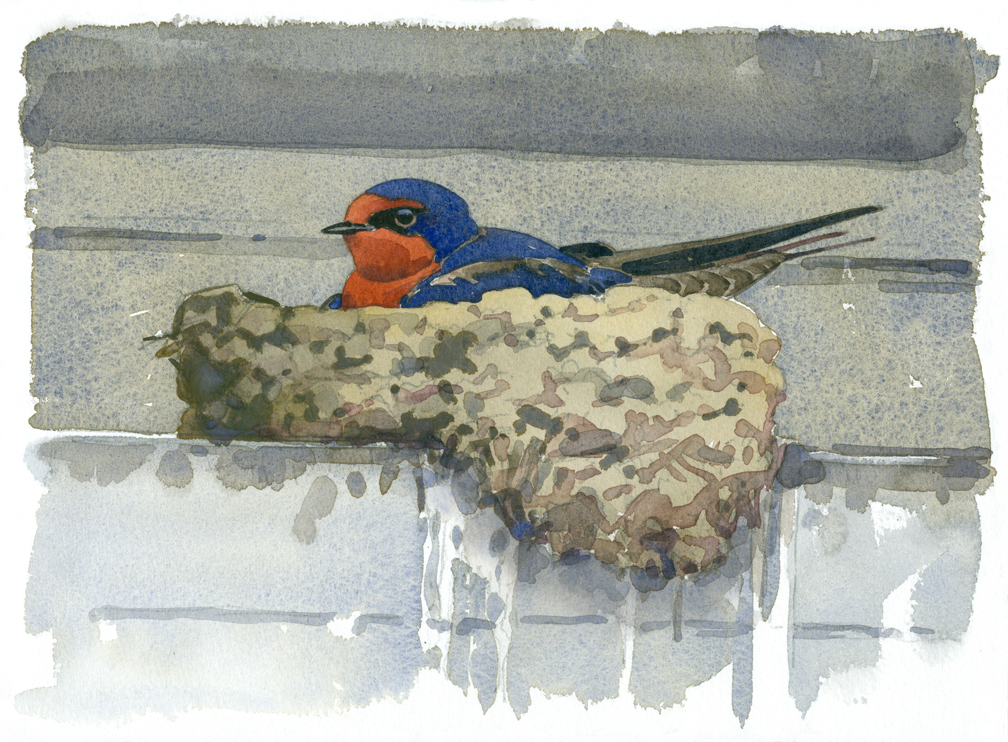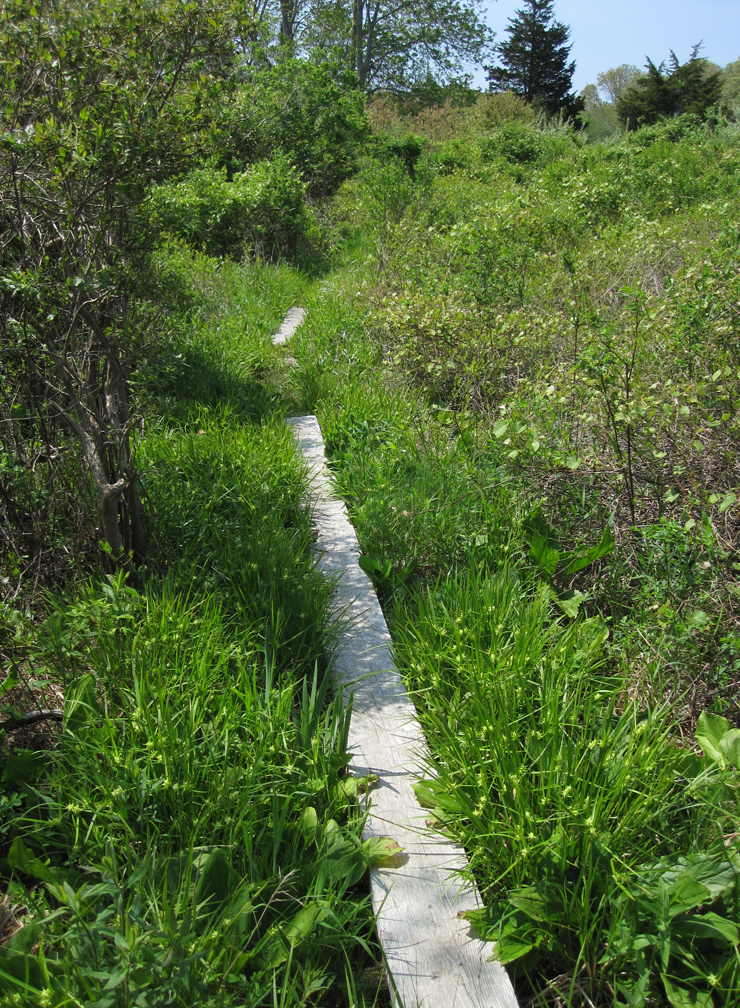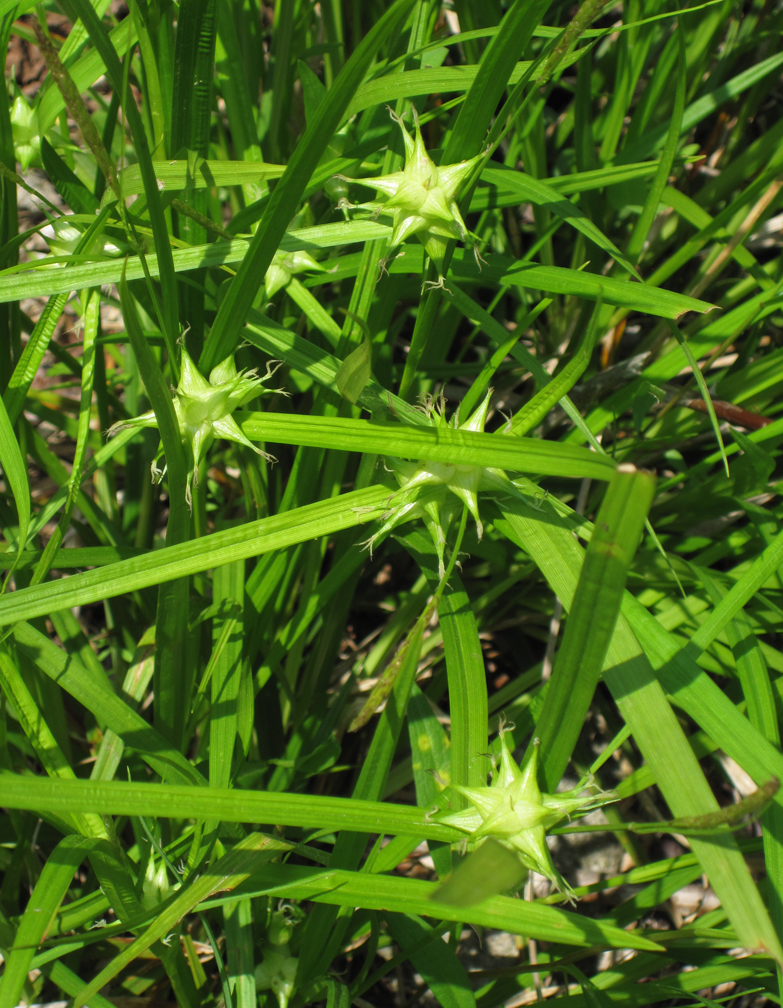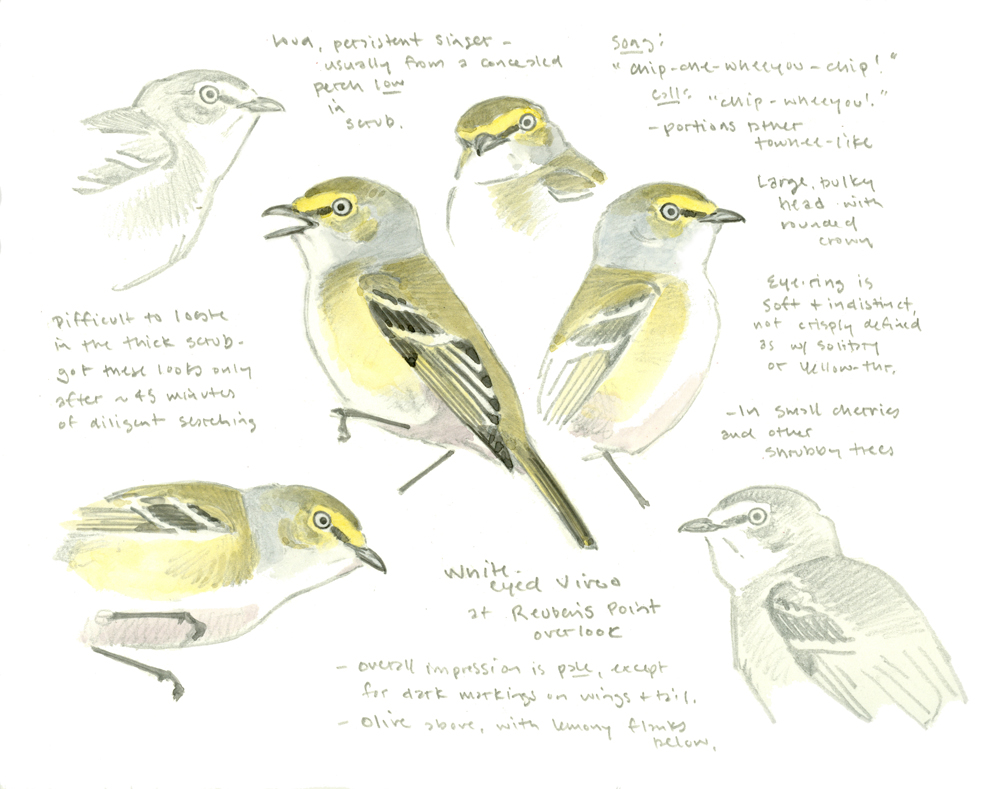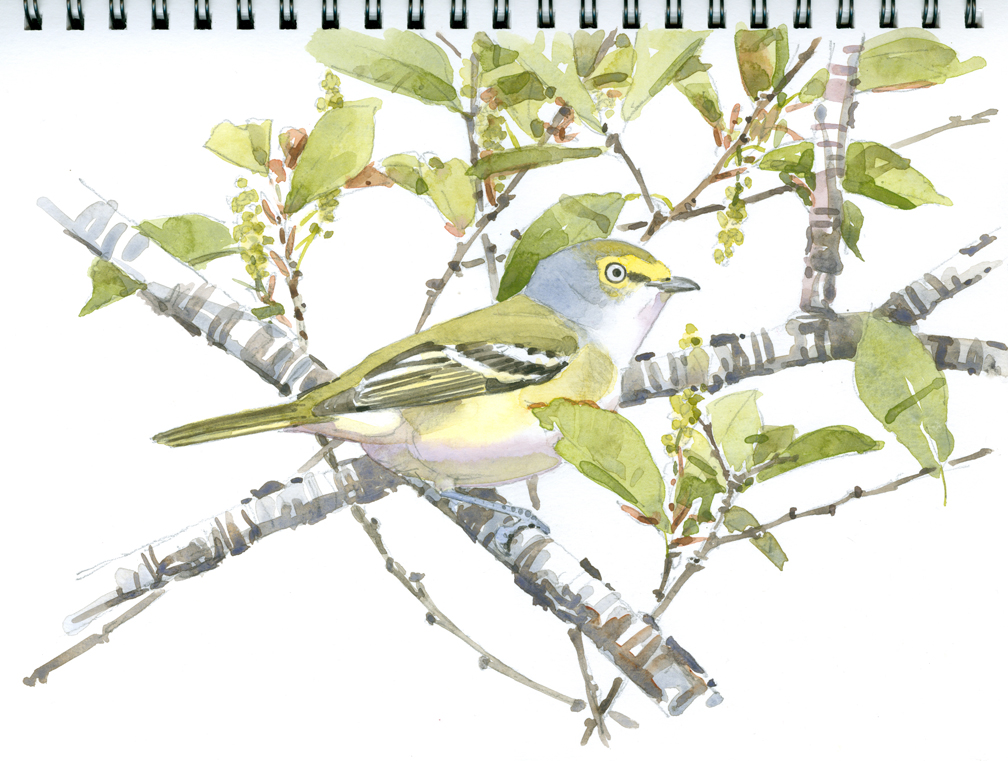This summer the Museum of American Bird Art is thrilled that Maris Van Vlack, a rising sophomore at the Rhode Island School of Design, will be interning at MABA. She will be sketching and painting in the wildlife sanctuary. She will be blogging about her experience. Enjoy her post about a week spent at the vernal pool. –Sean Kent
I have noticed the vernal pool has changed a lot over the past few weeks. The water level has gone down 2 or 3 feet since the beginning of June, the weather has gotten hotter, and the humidity has gone up. I tried to capture the feeling of moisture in the air by painting the trees in the early morning fog.

Differentiation of value is what gives this painting depth of field. The trees in the foreground are darker and more saturated than the trees in the background. When water is brushed over dry paint, the pigment can then be lifted up with a paper towel, which is how I achieved the light foggy effect in the background.
I tried to show the change in weather with the two paintings below by focusing on the reflections on the vernal pool’s surface. The one on the left was painted in the direct sunlight. The reflection of the trees in the water was strong and bright. The painting on the right was done a week later, when it was cloudy. A lot of pollen had washed down from the trees onto the vernal pool’s surface. There was a gray film over the surface of the water, with lots of tiny pieces of orange pollen floating in it. I tried to show these differences by focusing on the abstract shapes and colors of the constantly changing water reflections.

Sunlight reflection vs. cloudy reflection with pollen
I wanted to make sure that this blog series didn’t forget an important member of the vernal pool ecosystem: the frogs! They can be spotted peeking their heads up out of the water or sitting on nearby logs. (NOTE: In my sketch, I wrote that the frogs were green frogs, but I later decided that they were probably pickerel frogs because of the black stripe by the eye.)

The last drawing for today is a bit of an artistic experiment where the vernal pool plays a more active role in the drawing. For this piece, I used some mud and leaves from the edge of the vernal pool to make a drawing.

Drawing tools
The mark making tools I used for this drawing were a pinecone, a piece of wood, and some muddy leaves. The end of the pinecone was good for making scratchy lines. The wood was so wet that I could physically squeeze water out of it, so I used that like a watercolor paint. The leaves were the most useful to draw with because they were caked in mud and provided most of the “pigment” that I used in this drawing.

The subject of drawing is some of the maple leaves on the trees above. I thought this was fitting because decomposed leaves were the medium for the work. It is hard to get dark tones from the mud, but I like the light abstract quality that the piece has.
This week, go out and be creative with the materials around you! Remember how nature is always changing and use that as the motivation for your drawing, painting, sculpting, music, or whatever else you decide to create!
My name is Maris Van Vlack, and I will be blogging for the summer of 2020! I am a rising sophomore at the Rhode Island School of Design, with a major in Textiles and a concentration in Drawing. I used to take homeschool classes at the Museum of American Bird Art and have had my artwork exhibiting in their Taking Flight Exhibit for young bird artists.
I am especially interested in working with unusual materials in my work, and am inspired by plants, animals, and the patterns found in nature. This summer, I will be creating a guide for the MABA trails with sketches and paintings. I will be recording and writing about my observations, and sharing them through these blog posts. Hopefully this will be an educational and inspiring resource, and will motivate you to sketch what you see when you visit MABA this summer!



